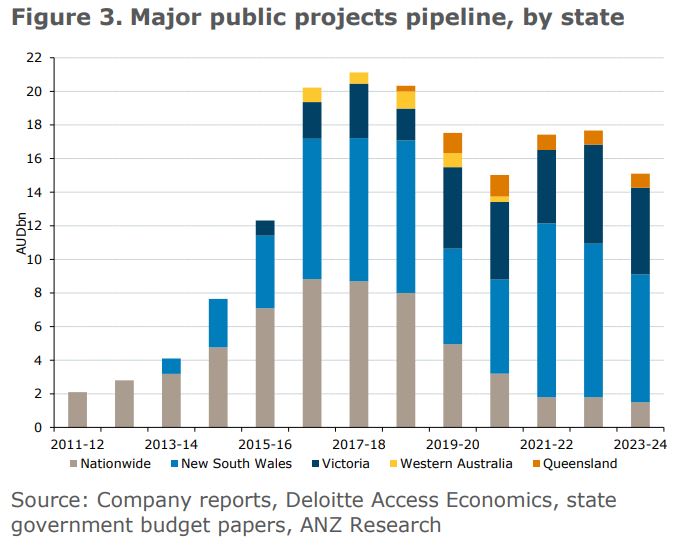Leith is busy putting together his critique of the NSW Budget, which has added some terrifically ill-timed austerity to the NSW economy. In the meantime Moody’s has delivered this clangor in its assessment:
Despite the housing market correction delivering a sharp decline in transfer duties, New South Wales’ 2020 budget highlights a continued strong operating surplus over the next four years. This surplus will underpin the state’s capacity to increase its debt burden and record a larger fiscal deficit as it implements capital spending initiatives following the March 2019 election. The forecast increase in debt over the next four years is considered manageable within its current Aaa rating, which is in turn supported by a large and diversified economy.
A surplus leading to higher debt…say what? This is made possible by costing the building of infrastructure as an investment item on the balance sheet without it impacting cash flow.
What is the net result for growth then? Much of the infrastructure spending is already in everybody’s outlooks and is really only back filling projects that are already rolling off, such as the NBN an West Connex so they will not add to growth (but will prevent a subtraction):

But the austerity is not in the outlook, so the net result is a new headwind for NSW growth.
More from Damien Boey at Credit Suisse:
The NSW budget has been announced, projecting yet another surplus, despite dwindling receipts from stamp duties, a record $93 billion spend on infrastructure over the next few years, and a few sweeteners for households.
Part of the issue is that the $93 billion on infrastructure requires greater Federal, rather than state funding. Another issue is the accounting treatment of infrastructure spending as an investment, rather than expense.
Treasurer Perrottet has taken a swipe at existing fiscal revenue sharing arrangements. But do his comments have any validity from an operational perspective?
We think so. The Federal government has a special reserve, or exchange settlement account (ESA) with the RBA. Effectively, this fund is self-replenishing after running through open market operations. Effectively, the Federal government has access to limitless “overdraft” like funding from the RBA. But the states do not have this privilege. In fact, they all gave up their ESA accounts by the early 1990s. This means that the states are revenue constrained. They need to first raise dollars before spending them. In contrast, the Federal government spends dollars before raising them.
State revenues largely come from GST revenue sharing arrangements and stamp duty revenues. With consumption growth slowing and the property sector weak, it is unsurprising to see that the NSW state government has found itself restricted in its efforts to stimulate the economy.
The solution is simple. Give states access to Federal funding arrangements. Either give them back their ESAs, or get the RBA to undertake a guarantee to buy all state (semi) government bond issuance to make state funding exercises a risk free exercise. Better yet, don’t actually do this – just create the mandate for the RBA to do it, or make the RBA’s semi-government bond buying activities more explicit. The credibility boost would be material.
At present, the bond market is reacting very positively (prices up, yields down) to austerity news. This is understandable, as monetary policy, under existing plumbing arrangements is somewhat tapped out. The ideal solution to this problem, to restore inflation targeting credibility and steepen the yield curve is fiscal easing. Failing this, make it look like the RBA is getting behind fiscal spending by the states.
Until then, we are not “QED”.

